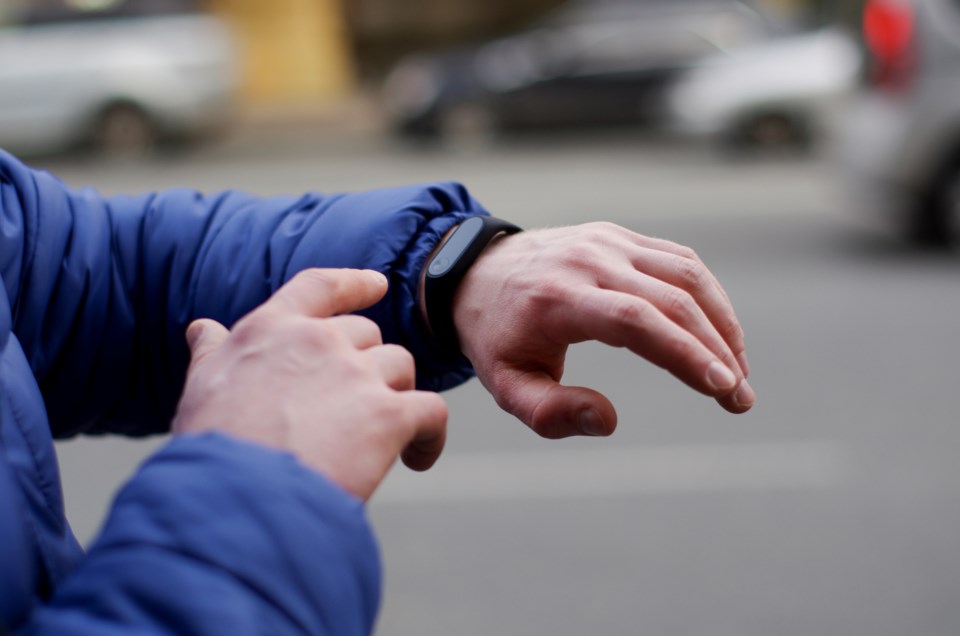Wearable technology such as Fitbit and Apple Watch are increasing in popularity.
Self-tracking devices can drive you to exercise more, reflect on how little sleep you’re getting, and make you aware of what you’re eating.
Wearables can be a “black box” for the human body
Given these devices monitor data such as activity levels, sleep patterns, heart rate, blood pressure, diet, exercise and calories burned, they can tell a lot about the wearer.
Paired with cloud storage, wearable devices create an electronic trail that can show what the wearer was doing on any given day.
James Ross, a personal injury lawyer at Orendorff and Associates in Sudbury says this tech can offer data to bolster or dispute a personal injury claim. Ross said, “Wearable technology can provide evidence that a client’s life was changed in a significant way. I anticipate that using self-tracking device data will become more common. The legal system already draws on a range of tech devices such as GPS and Apps for tracking movement such as bike rides.” Strava has been used in court proceedings around cycling accidents.
First Fitbit evidence was presented in Canada
The first case in North America where lawyers used Fitbit data to prove the impact of an accident on their client involved a personal trainer in Calgary. The data showed her activity levels were lower than the baseline for someone her age and in her profession, therefore she deserved compensation.
More recently, Brigitte Tougas, a bar manager in B.C. was involved in three collisions over two years. Before the accidents she had no apparent limitations. Her Fitbit recorded her taking up to 30,000 steps a day. After the accidents, she couldn’t work or play softball. Her Fitbit steps were 1,000 a day. Ross said, “Steps are something the jury can digest, rather than the plaintiff testifying she had been exercising 3 to 4 times a week.” The court awarded Ms. Tougas more than $1.2 million in damages and lost earning capacity.
Liability decided by self-tracking data
Liability, such as how a collision occurred is one of the most important issues raised in a personal injury case.
Ross said, “The question then becomes, how will a judge or jury perceive wearable tech evidence? How they perceive the evidence is probably better than a lay witness. Courts know that human witnesses can be biased or inaccurate. Google and Apple are not party to the litigation and the data on the wearable device was not created for the litigation or provided by a party who wants a particular outcome in the litigation. For instance, in a collision where the driver alleges that the pedestrian darted out in front of them without warning, but the pedestrian says they were crossing at a regular pace with walk light, the wearable device may be able to show the location of the collision and the pedestrian’s walking speed prior to the collision occurring.”
Ross believes juries would accept tech evidence as truth, especially if it was recorded prior to the collision. “It would be similar to the testimony of a human witness, bolstered by video evidence.”
Fitbit could carry significant weight
Data from wearables is poised to become even more insightful for courts as smart device sensors become more sophisticated, tracking not only steps but heartbeat and body temperature as well.
Medical professionals are called on to give evidence. But their assessments are made while examining a patient for minutes, while Fitbit can produce data based on activity throughout the day. Ross believes wearable tech might provide a better record.
Smart device evidence will be called more often, and lawyers required to produce the data will clearly want to know what it supports first. Ross said, “Personal injury lawyers must be confident in knowing what the technology is and what it shows.”
Clients in personal injury cases can expect to be asked if they own a self-tracking device and if they wear them all the time. Ross said, “We should be getting that data early on if it shows a decrease in activity. We want the judge and jury to see how active they were before the collision and how diminished their activity is after the crash.”
Smart devices will make people more honest
Ross believes, “These devices will make people more honest, not because they were trying to deceive before, but because their memory has faded. The data will be used to refresh their memory, while it can also be used to impeach their credibility, if what they’re saying isn’t true. A jury doesn’t like a liar.”
Ross always tells his clients to simply tell the truth and don’t exaggerate about how their lives have been impacted. “Now that we have Fitbit or Apple Watch data, it will support what we’ve been saying. If they used to run 5km in 25 minutes and now it takes 45 minutes, the data will show that and the jury is going to accept that.”
Wearable tech can be a gold mine of potentially relevant information to support or refute a personal injury claim. It will compel those testifying to be more honest and the device will show a clearer before and after picture that will most likely result in a fairer judgement.
Contact James Ross at (905) 673-1200 or visit them online here.
